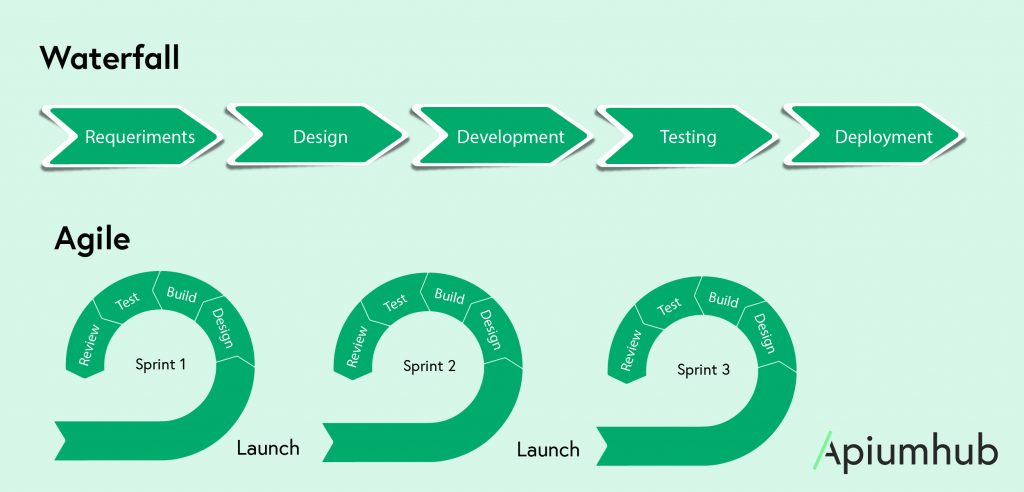Table of Contents
Many companies are stuck in old ways of operating, and that negatively affect an organization’s speed and adaptability to change. Nowadays, to be competitive in the digital age, businesses need to achieve agility.
But many leading companies struggle to be efficient, and data-driven, which then makes them less productive. Agile transformation isn’t just about technology. It’s about a new way of thinking. It’s more collaborative, more open, more creative, and much more efficient than other business models. And it’s something that can be implemented across a company, not just in one or two departments.
Actually evidence indicates that agile project management results in a higher success. High quality, reduced costs, greater levels of customer satisfaction, shortened time-to-market, improved flexibility, faster feedback and ROI. etc. With so many great advantages, companies start embracing Agile ways of working. I am sure you have noticed that the popularity of agile has skyrocketed in recent years, and we are not talking only about software development industry. Now, agile is adopted across different projects, departments and companies. To tell you the truth, I truly believe that Agile transformation is essential in changing your company into a true innovative business. It is all about changing your culture, your processes, improving your quality and business results.
It’s interesting, if you ask talented young people to name their dream company from an employment perspective, they’ll almost always name companies like Facebook, Google, Netflix, Spotify, Uber, etc. Why? The thing is that none of these companies operate in the same industry, but what they all have in common is a particular way of working and a distinctive people culture. They work in small teams that are united, following agile methodology.
Agile Transformation
To start with an agile transformation you should definitely hire an Agile Coach. To start the process right from the beginning. Even though if you are familiar with agile methodology and you believe you manage an agile project for a long period of time, it doesn’t mean you can transform the whole organization. Agile transformation means that all people and all processes in a company should be agile and imagin government or huge companies with over 500 000 employees. It is extremely difficult to change them, in the best scenario you will need nearly 1 year to do so. So, my recommendation would be to go for an Agile coach, he knows how and when to start. Agile coach normally speaks with management and with employees to better understand why the organization wants to go through agile transformation, to understand the current situation of the company, main goals and priorities, etc. And then, based on organization feedback, coach will select the right tools and practices for the company.
But wait, the agile transformation itself, what is that? In simple words, it is a transformation of an organization to one that is able to embrace and thrive in a flexible, collaborative, self-organizing, fast changing environment.
It is made up of the following 3 key areas
1. Structure; this is about how your organization will form teams at all levels of the company
2. Governance; the way in which your organization intakes work, makes decisions about priority, balances capacity and demand as well as coordination across teams.
3. Metrics & Tools; how you are going to measure organizational performance. This is about gathering the metrics, showing improvement, and communicating those metrics to the appropriate stakeholders. Just to give you an example, a typical KPI is delivery time, measured from the moment a customer request is accepted until the moment it’s delivered to production.
First of all you need to think about the end results, about your goals, for example to cut the lead-time for project delivery. Agile approaches are just your path to your goals, to your desired results. Here it is important to answer the following questions: What is failure for you? What is your current performance level? What performance level you want to achieve ? etc. Then, you need to plan & execute incremental improvements. After identifying your goals, you need to make incremental progress toward them, iteratively. Normally teams work with 2 weeks sprints following agile transformation roadmap. As every organization or team has their own unique challenges, culture, processes, goals, that must be taken into consideration when creating an agile transformation roadmap; a high level plan that helps to communicate the vision and the steps an organization wishes to take towards their agile transformation.
Agile transformation: steps to consider
1. Describe what is changing
This is perhaps the most important step that the leadership team should consider when beginning the agile transformation. Leaders should clearly set the vision for change and how the business would benefit from that change.
2. Create the implementation team
Once the transformational vision is identified, leadership should also identify the right set of people to own, plan, and run the transformation agenda. This team should include senior members from the organization. It is a good idea to include members who have experience in Agile project management. The leadership should also assign specific roles and responsibilities to the agile implementation team members.
3. Identify quick benefits
Now the implementation team should make sure that stakeholders see some quick benefits through the Agile ways of working. For example, they could identify a couple of projects where they deliver a set of critical functionalities to production faster using the Agile methods.
4. Brand and socialize
The team should create a brand or a tagline for the transition to Agile ways of working. The tagline should be catchy and easy to remember, so it can stick for a long time. Agile transformation is a mindset change. Continuous communication is necessary to reinforce the need for Agile and its benefits to different teams.
5. Train, experiment and make corrections
Definition of Done, sprint planning and many more should be practiced and analysed.
Continuous improvement is key here, leadership should get feedback from the stakeholders, on a continuous basis to validate that the business is in fact benefited by Agile practices.
Time for agile transformation statistics
Let’s look at numbers and facts to be sure that Agile transformation is a good strategy.
Project failure rates: Agile vs Waterfall
- Small projects: Waterfall 11% vs Agile 4%
- Medium projects: Waterfall 25% vs Agile 11%
- Large projects: Waterfall 42% vs Agile 23%
Key motivators for agile transformation
Why have so many organizations moved to agile? Here is the answer. Answer of 403 organizations, which already went through agile transformation.
- 54% – enhances collaboration between between teams that don’t usually work together
- 52% – increases the level of software quality in organizations
- 49% – increase customer satisfaction
- 43% – shortens time to market
- 42% – reduces cost of development
Agile transformation case study: ING
To start agile transformation it is good to know how others did it and what it actually gave them. Let’s look at how and why leading bank ING went through it and what it achieved.
In 2015, the Dutch banking group ING started it’s agile transformation. ING was inspired by companies such as Google, Netflix, and Spotify and wanted to increase efficiency just like they did. And just by comprising about 350 nine-person squads in 13 groups, helped them improve time to market, boost employee engagement, and increase productivity.
Actually when they introduced an agile way of working in June 2015, customer behavior was rapidly changing due to new digital distribution channels, and customer expectations were influenced by digital leaders, not just banks. And ING wanted to stop thinking traditionally about product marketing and start understanding customer journeys in this omnichannel world.
And agile transformation was a must to be able to achieve that as well as achieve agility, flexibility and the ability to rapidly adapt to the changing circumstances.
Also, ING had a goal to build stronger, more rounded professionals out of all their people.
The idea was to work in multidisciplinary teams; mix of marketing specialists, product, commercial specialists, UX designers, data analysts, IT engineers, etc. All of them should be focused on solving the client’s needs from their perspective but at the same time they should be united by common goals and definition of success.
Of course good organizational structure was considered and re -thought as well. ING worked on clarity around the new roles and governance.
As for the IT department, ING invested a lot in DevOps and continuous delivery. Their aspiration was to go live with new software releases on a much more frequent basis – every two weeks rather than having five to six “big launches” a year. The integration of product development and IT operations has enabled them to develop innovative new product features and position themselves as the number-one mobile bank in the Netherlands.
ING strongly believes that culture is the most important element of this sort of change effort. They have spent an enormous amount of energy and leadership time trying to role model the sort of behavior, ownership, empowerment, customer centricity, etc. They believe that culture needs to be reflected and rooted in anything and everything that they undertake as an organization and as individuals.
I hope this article was useful for you! If you are interested in agile transformation, in project management and software development, I highly recommend you to subscribe to our monthly newsletter here.
If you found this article interesting, you might like…
- 5 benefits of agile project management
- Benefits of continuous integration
- 20 advantages of test driven development
- Top business blogs to read
- Benefits & examples of microservices architecture implementation
- Top 10 benefits you will get by using docker
- Benefits of software architecture
- Top software development blogs
- DevOps technologies & benefits
Author
-
Ekaterina Novoseltseva is an experienced CMO and Board Director. Professor in prestigious Business Schools in Barcelona. Teaching about digital business design. Right now Ekaterina is a CMO at Apiumhub - software development hub based in Barcelona and organiser of Global Software Architecture Summit. Ekaterina is proud of having done software projects for companies like Tous, Inditex, Mango, Etnia, Adidas and many others. Ekaterina was taking active part in the Apiumhub office opening in Paseo de Gracia and in helping companies like Bitpanda open their tech hubs in Barcelona.
View all posts










